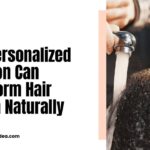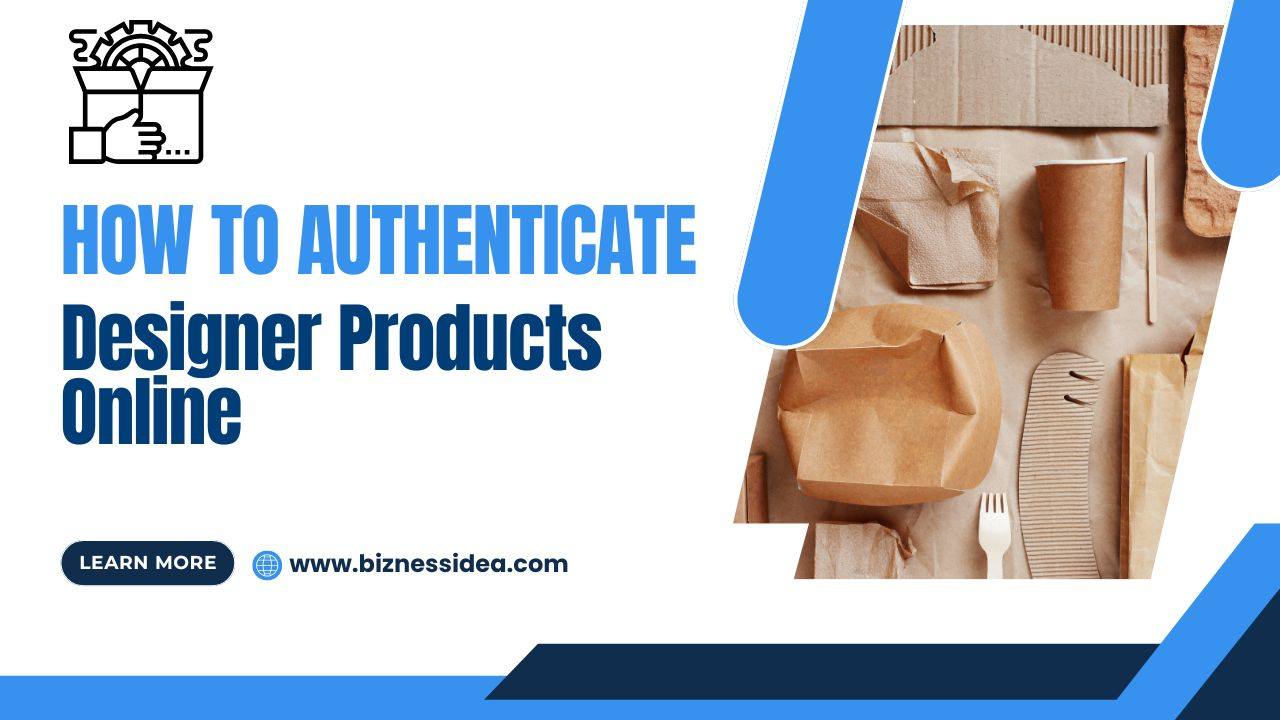Buying or selling high-end items online can be thrilling, but it also comes with a risk: how do you authenticate designer products online and make sure what you’re getting is the real deal? With more luxury resale websites popping up every year, shoppers and sellers alike want to feel confident that they aren’t being duped by convincing fakes. In this guide, you’ll learn the smart ways to authenticate designer products online, identify common signs of counterfeits, and use tools that help protect your wallet and your reputation.
Why Product Authentication Matters in the Luxury Resale Market
- Rise of Counterfeit Luxury Goods
The counterfeit luxury scene is bigger than ever. Globally, counterfeit goods, especially in the fashion industry, are a thriving business. From bags to sneakers to watches, knockoffs are becoming so realistic that even experienced buyers are sometimes fooled. These fakes may even come with copied logos or forged certificates.
But no matter how real they look, they have no actual value. Worse, some counterfeit items are made in unsafe, unethical environments. That’s why it’s essential to verify second-hand luxury items carefully, not just for your safety but also to avoid supporting shady practices.
- Trust Issues Among Online Shoppers
Shopping on luxury resale websites is convenient and opens up access to rare finds. But with convenience comes risk. A big question most buyers ask is, How do I verify second-hand luxury items before hitting the ‘buy’ button?
It’s common to find listings that don’t show enough images or skip important angles, like close-ups of stitching or logos. Some sellers don’t show serial numbers at all. Without these details, it’s hard to know what you’re getting.
- Impact on Reseller Reputation
If you’re a seller, authenticity is everything. Just one bad sale, whether intentional or not, can destroy your reputation. Negative reviews and refund requests can follow quickly.
That’s why sellers on resale platforms often go out of their way to provide authentication documents or use trusted tools. If you’re serious about building trust, learning how to verify second-hand luxury items can help grow your brand and attract repeat buyers.
Top Methods to Authenticate Designer Products Online
- Brand-Specific Authenticity Markers
Each designer brand adds specific details to help prove authenticity. These subtle features can be hard to fake. Louis Vuitton bags have date codes, tight stitching, and logos that line up perfectly. Gucci often includes serial numbers inside products and even QR codes. Chanel uses hologram stickers and cards with matching serial numbers. Knowing these differences helps when you want to authenticate designer products online on your own. Resale platforms often provide brand guides to make this easier.
- DIY Authenticity Check for Luxury Goods
Doing a DIY authenticity check for luxury goods can be useful as a first step. Here’s how:
- Compare Images: Look at official photos from brand websites and trusted retailers.
- Inspect Stitching: Luxury brands use neat, even stitching. Sloppy seams are a red flag.
- Feel the Material: Authentic items feel premium, soft leathers, sturdy zippers, and quality fabrics.
- Check Serial Numbers: Search the number online and compare formatting with genuine examples.
- Test the Weight: Many authentic bags and accessories are heavier due to quality materials.
A DIY authenticity check for luxury goods isn’t a guarantee, but it helps spot obvious fakes early.
- How to Spot Fake Luxury Items Online
To spot fake luxury items online, focus on listing details: Too-Cheap Prices: If it’s drastically cheaper than usual, be suspicious. No Returns: Honest sellers allow returns for inauthentic items. Few or Blurry Photos: Real sellers show all angles and key features. Sketchy Descriptions: Phrases like “mirror copy” or “replica” are red flags. New Seller Accounts: Always check reviews and account history. Learning to spot fake luxury items online takes practice, but asking for more images or proof always helps.
Digital Tools & Platforms To Authenticate Designer Products Online
- Trusted Third-Party Authentication Services
Several services are built specifically to help authenticate designer products online before you buy or sell. Popular names include: Entrup: Uses AI to scan photos and check textures, Real Authentication: Gives a detailed report with expert feedback, Pro Authenticators: Specialises in luxury handbags like Chanel and Louis Vuitton. These services often charge a fee, but they offer peace of mind. These are great resale authentication tips for designer goods that anyone can use.
- AI and Image Recognition Apps
Do you need quick and nearly accurate feedback? AI and image recognition apps can help you in this by scanning your goods and products and giving you feedback. Several AI tools help in resale authentication tips for designer goods, like LuxDetect, LegitGrails, Zoklean, etc. In this, you just have to upload photos, images, and videos of your products, and these tools will give you quick feedback, although they are not 100% accurate but they are very relevant according to the product. These tools are being built into many resale platforms to speed up the process.
- How Resale Platforms Verify Designer Authenticity
Most people wonder: How to verify designer authenticity on resale sites? Big-name platforms like The RealReal, Rebag, and Vestiaire Collective do the following: Employ in-house authentication experts, use software to cross-check details, Partner with third-party services, etc. Knowing how these platforms work helps buyers and sellers feel more secure and prepare listings properly.
Legal and Ethical Implications of Authenticating Designer Products Online
- Brand Protection Laws
Luxury brands actively protect their logos and trademarks. Selling counterfeit goods, even by mistake, can lead to legal trouble. In many countries, reselling fake items is illegal, especially under consumer protection laws. Some resale sites even report users trying to list counterfeits.
- What Sellers and Buyers Should Know
Whether you are a seller or a buyer, both need to be cautious so that there is no fraud between them in the future. Both of them need to know that transparency is the only key that will help anyone in buying or selling goods. Keep receipts, certificates, and records when possible. These help confirm authenticity. Sellers who include detailed descriptions and photos stand out as trustworthy. Buyers can use these as clues when deciding who to buy from.
Final Checklist to Authenticate Before You Buy or Sell
- 5-Point Manual Checklist
- Look for serial numbers, holograms, or brand-specific tags
- Compare photos to the brand’s official product listings
- Check the craftsmanship—especially stitching, labels, and zippers
- Examine packaging—fakes often skip quality boxes or tags
- Use trusted apps or services for extra confidence
- When to Seek Expert Help
It is very important for everyone to know when they might need experts for authenticating designer goods while reselling. Because some designer items are quite difficult to verify, especially vintage or rare ones. That’s when expert help is best: Use a professional authentication service, contact the brand’s support team, and ask the resale platform if they offer in-house checks. In case such a situation arises, it is better to spend a little extra and take help from experts than deal with a big loss.
Conclusion
Being able to authenticate designer products online gives you more than just bragging rights. It protects your money, builds trust, and keeps the resale market clean. Take time to learn brand markers, use tools and services, and don’t hesitate to get expert opinions. In the end, trust is built on transparency and proof. Whether buying or selling, showing that you care about authenticity is always a win.
From using resale authentication tips for designer goods to reading seller reviews carefully, every small step counts. A bit of effort now can lead to smarter, safer luxury purchases later.
FAQs
Que 1. Can I authenticate luxury goods without original receipts?
Ans. Yes. You can still get an item authenticated through its design, logos, serial numbers, and materials. Original receipts help, but they’re not essential.
Que 2. Are resale platforms 100% reliable?
Ans. They do their best, but nothing is perfect. That’s why using your judgment, doing a DIY authenticity check for luxury goods, and getting a second opinion always helps.
Que 3. How much does authentication cost?
Ans. Most services charge between $10 and $100, depending on the product. High-end items like bags or watches might cost more to authenticate, but it’s often worth the investment.













